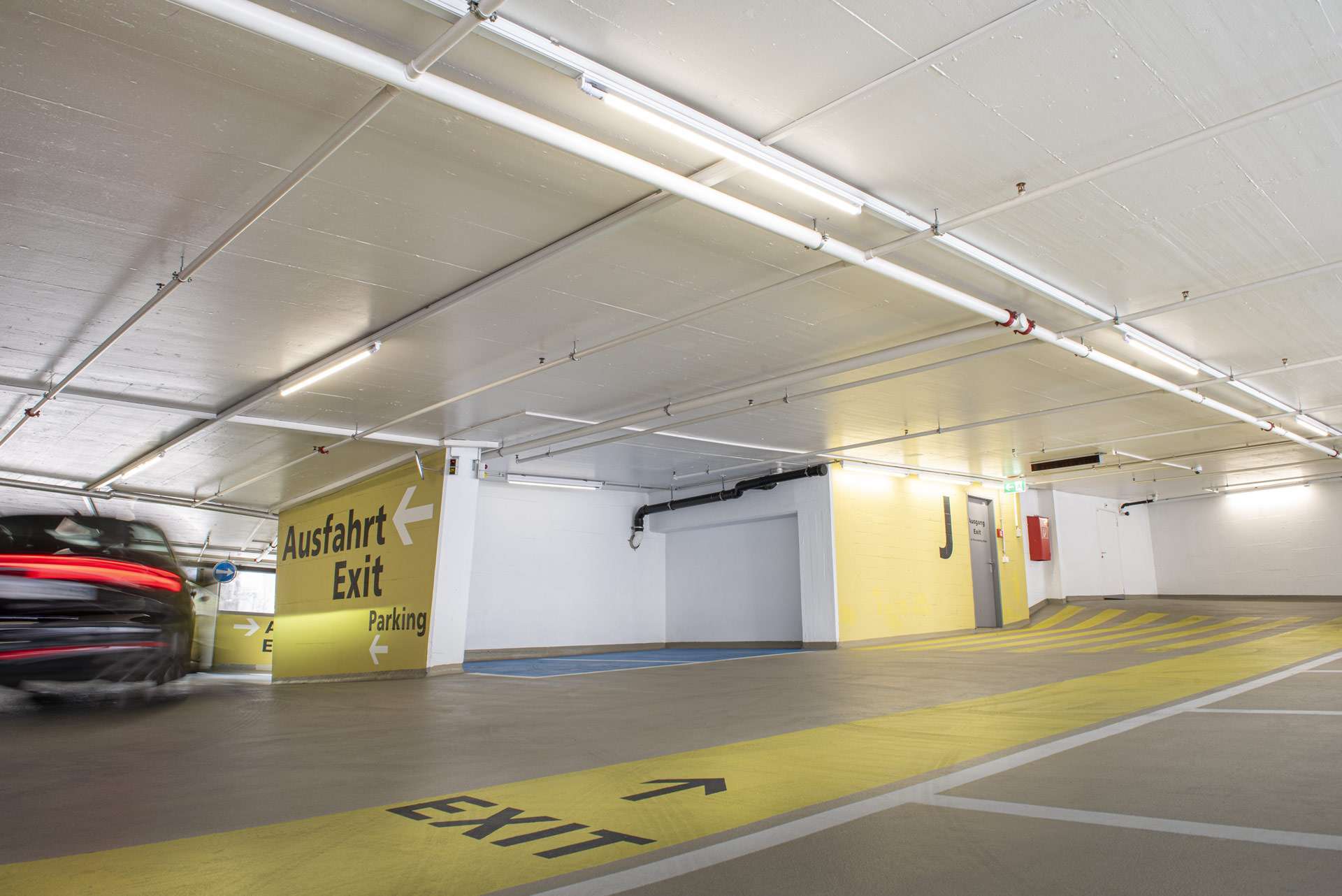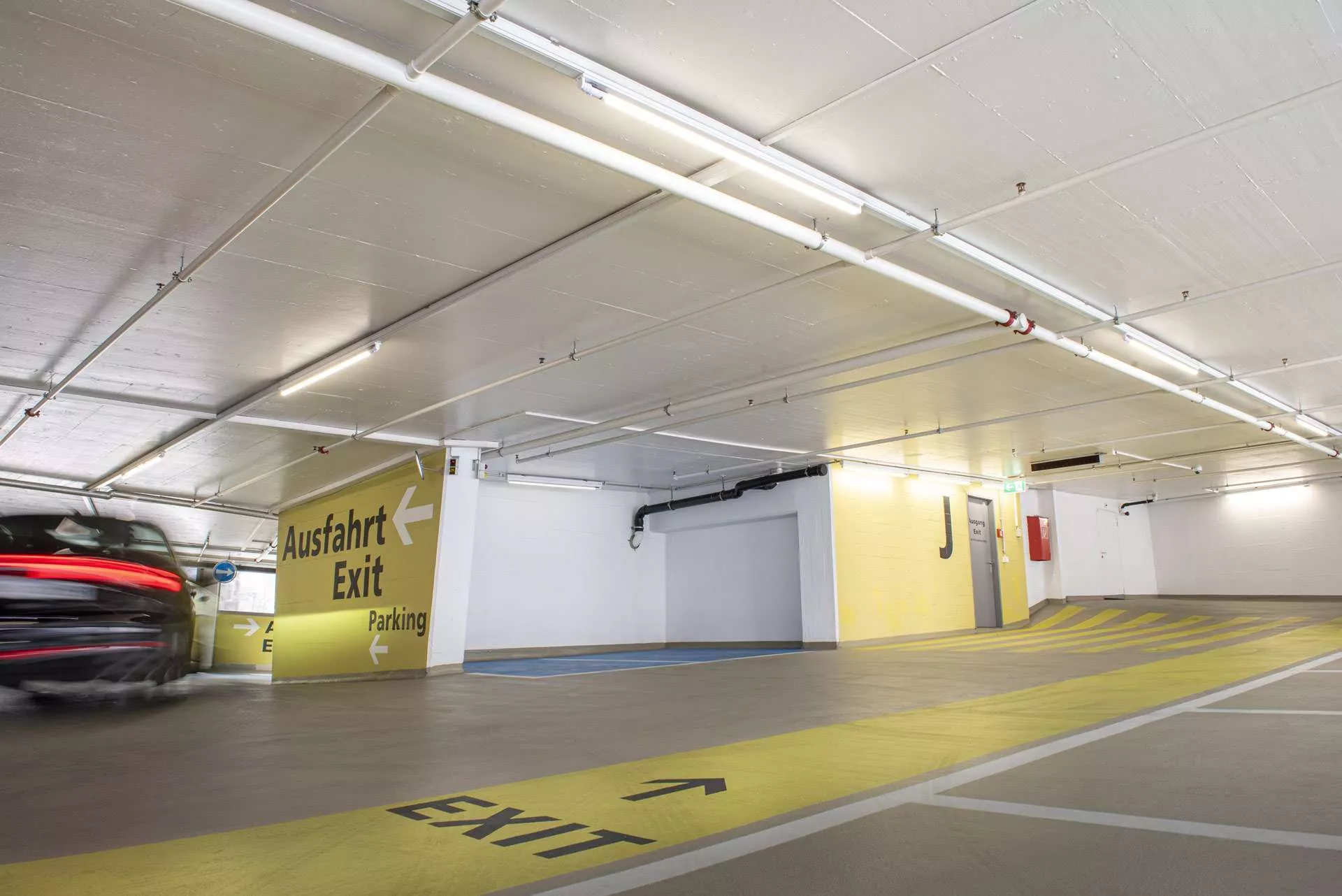
Blog Posts - 26.07.2024

In terms of environmental friendliness and energy efficiency, LED light sources are clearly superior to other light sources. But how environmentally friendly are they really? The overall life cycle assessment is the decisive factor. This calculates the consumption of resources and emissions along the entire life cycle – from production to operation and recycling. In his study, Marco Sutter compares the life cycle assessments of various light sources and luminaires. Do LEDCity lamps have a good life cycle assessment?
Where there is light, there is also shadow: in order to produce luminaires and make them shine, raw materials have to be extracted, components manufactured, electricity generated, luminaires transported, installed and waste disposed of. All these factors in their life cycle have an impact on the environment – from the production facility in China to use in buildings and recycling in Switzerland. Our Junior Sales Engineer Marco Sutter compiles and compares the life cycle assessments of LED lighting from LEDCity with conventional lighting. In the case of LEDCity products, the non-autonomous and semi-autonomous light sources and the corresponding wet room lampholder are analysed.
The light source study shows which process step causes the greatest negative environmental impact – production, transport or operation? As LEDs are not only known for their energy savings during operation, but also for their costly production, the study focusses on comparing and interpreting the energy consumption in the production and use phase.
The life cycle of the LEDCity product and the luminaire of a well-known competitor both begin in their respective production facilities in China. Production differs as follows:
The non-autonomous LED tube from LEDCity can be compared with LED tubes from other suppliers in terms of functionality: it has no intelligence and, unlike LEDCity’s core products, has no sensors. Compared to conventional light sources, the service life of the non-autonomous light source is increased to up to 50,000 hours. This is due to the LED technology, the high-quality components and the good heat dissipation of the aluminium heat sink of our products.
The basic components of the non-autonomous light source are the aluminium heat sink, the PC diffuser, LED strip, driver, end cap, connection pins and the integrated cables. The same materials and properties can also be found in LEDCity’s semi-autonomous light source. The big difference? The sensor head. With the help of the built-in radar and light sensor, decisions are taken away from people by adapting the light to the actual requirements over a small area. Due to the additional control head, however, the energy required to manufacture the semi-autonomous tube is 0.3 kWh higher than for the non-autonomous light sources and therefore also has the highest manufacturing costs of the three light sources in this study – but we will see later how much this affects the overall balance. Some of the classic fluorescent tubes are made of other materials such as glass and often contain problematic substances such as mercury.
Once the light sources have been produced, they are packaged at the production site: the LEDCity light sources are transported in a cardboard box with pieces of EPE foam as inserts for the tubes. Plastic film has long been dispensed with due to its environmental impact.
The conventional light source (1.2 m, 36 W), which is also produced in China, consumes around 0.44 kWh during the manufacturing process. Studies show that the packaging has significantly more filling material and cardboard than LEDCity.
Once produced and packaged, the lamps continue their journey: they travel the greatest distance from China to the warehouse in Switzerland. The LEDCity products are transported from Chongqing (CHN) to Hamburg (DE) by electric goods transport. Due to the lower environmental impact during transport, LEDCity avoids flights and consistently relies on the railway as a means of transport. Once in Germany, the lamps are transported by lorry to Emmen (CH). From there, LEDCity’s logistics partner takes care of warehousing and transport from the warehouse to the customer’s place of use.
The journey of the conventional luminaire also begins with transport by train from Chongqing City (CHN) to Eindhoven (NL). From there, it continues by lorry to the warehouse and then to the end customer in Switzerland.
Once it arrives at the customer’s premises, the light source is installed by an electrician. During operation, the sensor technology then makes the decisive difference: the electricity consumption per lighting hour is significantly lower. Thanks to dimming, the semi-autonomous light source is also exposed to less heat, which can increase its service life from around 50,000 to up to 70,000 hours.
A striking feature compared to the competitor’s conventional lights is that although they have a higher luminous flux, the system efficiency is significantly lower at 93 lm/W due to their fluorescent tube technology. This results in twice the energy consumption of the fluorescent tube. During the operating life of the semi-autonomous LEDCity light source, the fluorescent tube has to be replaced a total of 3.5 times. The non-autonomous light source only needs to be replaced 1.4 times during the same period.
During operation, the conventional light source requires 39.5 W (36 W fluorescent tube power plus 3.5 W ECG power), the LED tube without sensors a maximum of 18 W and the semi-autonomous LED tube an average of 6 W per hour thanks to the integrated sensors and the associated automatic dimming (e.g. to 10% ambient lighting when no one is present).
Overall, the operating phase is responsible for over 60 % of the negative environmental impact of all light sources and is therefore the phase with the greatest potential for savings.
At the end of the life cycle, only the transport to the disposal site remains. A sustainable option is also chosen for dismantling and disposal: LEDCity is a vRG partner of the SENS Foundation. This foundation is committed to the sustainable recycling of disused electrical and electronic appliances, light sources and luminaires in Switzerland. By paying a recycling fee in advance, LEDCity customers can easily have their old light bulbs collected by SENS, which then takes care of sustainable recycling.
The manufacturer of the conventional fluorescent tube also opts for sustainable recycling by SENS. However, the entire luminaire and not just the light source must be replaced and disposed of. This includes the fluorescent tube and the electronic control gear (ECG).
The results of the three life cycle phases analysed make one thing clear: the operating phase is responsible for the highest negative environmental impact. Why is this the case? In addition to power consumption, the service life also has an influence on the service life. The decisive factor is therefore how efficiently the light is used. The energy efficiency of LED tubes with integrated sensors is particularly high: the additional sensors (sensor head) enable the light to be automatically adjusted to the light intensity and duration actually required. The result? Energy consumption can be halved as the light is only switched on when needed. Another interesting finding of this study is that the sensors are responsible for less than 1 per cent of the energy consumption during production – and ensure electricity savings of over 50 per cent. The “retrofit concept” also contributes to the semi-autonomous LED tube winning the comparison: just as with the non-autonomous light source, the semi-autonomous light source can also be easily replaced. In view of the fact that the manufacture of the wet room socket is responsible for up to 60 per cent of the energy consumption of the entire luminaire, it makes perfect sense to only have to replace the light source and be able to continue using the socket.

Would you like to find out more about the implementation and results of the new light source study? We would be happy to provide you with information in person. We also welcome enquiries and feedback of a general nature.
If you are interested in a conversion, we will be happy to support you. We will discuss the possible options with you in person, introduce you to our product range and submit your funding applications quickly and easily. We look forward to hearing from you and will be happy to provide you with a non-binding quotation.
Want to find out more about us?
Get in touch with us!
If you have any questions, please contact [email protected]